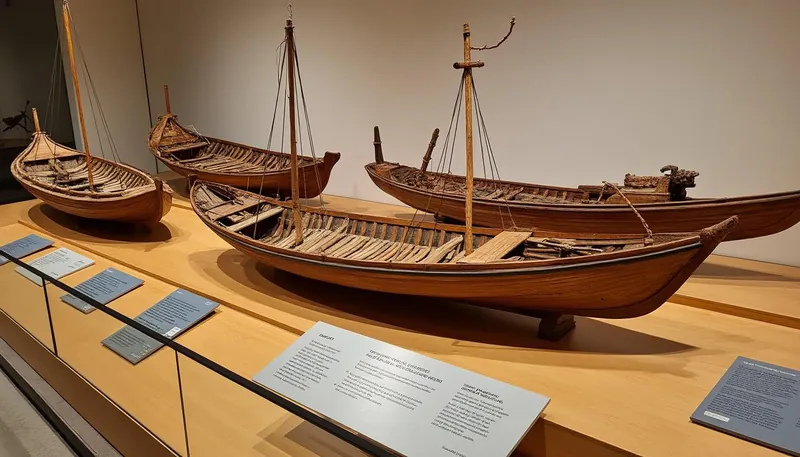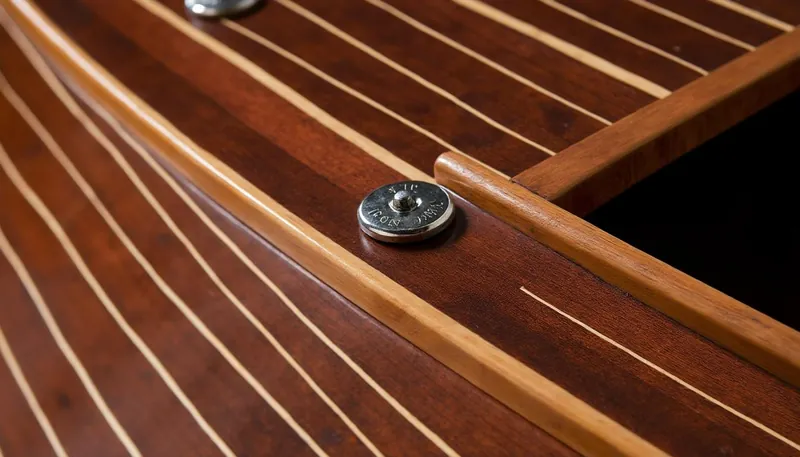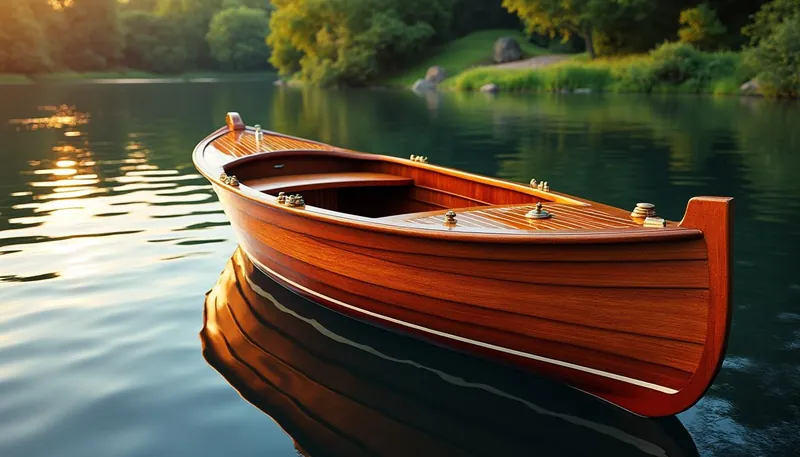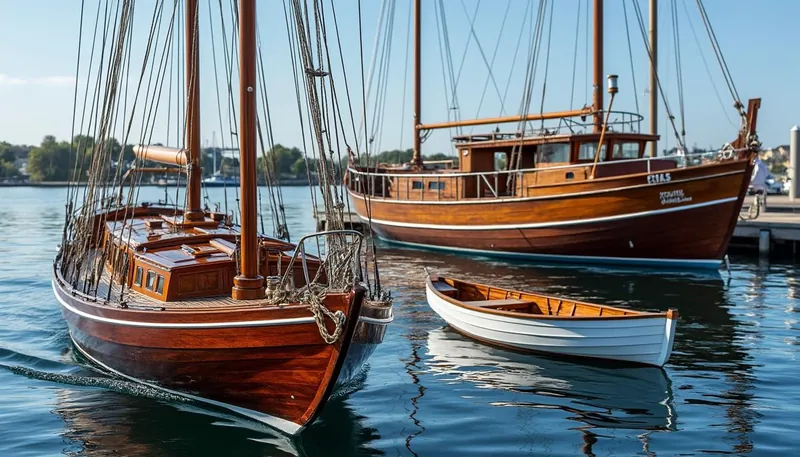Wooden boats have long captivated the hearts of enthusiasts, sailors, and artists alike, attributed to their stunning aesthetics and rich history. From the sleek contours of a Riva to the robust frame of a classic Hinckley, each vessel tells a story of craftsmanship and tradition. The golden hues of mahogany catching the sunlight, the graceful curves of steam-bent wood, and the invigorating scent of fresh varnish combine to create a sensory experience that goes beyond mere functionality. This article delves into the various reasons behind the aesthetic allure of wooden boats, exploring their historical significance, the intricate craftsmanship involved, and the emotional connections they foster.
In brief:
- 🛶 Timeless craftsmanship: Handcrafted wooden boats showcase exceptional skill and artistry.
- 🌳 Natural beauty: The organic textures and colors of wood create a stunning visual appeal.
- 👪 Cultural significance: Each design reflects regional heritage and maritime history.
- 🌊 Emotional connections: Wooden boats evoke nostalgia and a deeper appreciation for nature.
- 🚢 Innovative design: Modern techniques blend traditional methods with cutting-edge technology.
The Historical Significance of Wooden Boats
Wooden boats have an impressive lineage that traces back to ancient civilizations, including those of Egypt and Mesopotamia. Dating as far back as 4000 BC, these vessels were typically crafted from local timber, essential for trade, exploration, and cultural exchanges. Over the centuries, advanced shipbuilding techniques evolved, leading to iconic designs that still resonate today.
Evolution Across Cultures
Throughout history, wooden boats have held importance in various cultures. For example, the Viking longships were celebrated for their speed and versatility, allowing explorers to navigate treacherous waters and expand their horizons. On the other hand, the Polynesian outrigger canoes showcased remarkable engineering, enabling inter-island trade and cultural exchange across vast oceans.
As boatbuilding practices developed, so did aesthetic sensibilities. The intricate designs and decorative elements found on wooden vessels often reflected the values and art forms of their respective cultures. The maritime legacy of wooden boats is a tapestry woven with the contributions of countless artisans and craftsmen who embraced the beauty of natural materials. Here’s a notable timeline:
| Year | Civilization | Notable Development |
|---|---|---|
| 4000 BC | Egyptians | First wooden ships crafted for trade and transportation |
| 800 AD | Vikings | Longships designed for exploration and raids |
| 1200 AD | Polynesians | Outrigger canoes enhancing ocean navigation |
| 1600s | Europeans | Advancements in naval architecture, including hull designs |
| 20th Century | Global | Transition to fiberglass and modern materials |

The Art of Craftsmanship in Wooden Boat Building
Crafting a wooden boat is not just a skill—it’s an art form that demands patience, precision, and a deep understanding of materials. The process begins with the careful selection of wood, often opting for rich hardwoods such as mahogany, teak, or oak. Each wood type offers unique physical attributes that contribute to the boat’s beauty and performance.
Traditional Techniques
Artisans utilize time-honored techniques in the construction of wooden boats, reflecting generations of knowledge and expertise. Among the most revered methods is steam bending, where wood is subjected to steam heat, allowing it to be manipulated into graceful curves. This technique is crucial in shaping the hull of many classic boats, resulting in visually striking designs that glide through the water effortlessly. Alongside steam bending, joinery methods such as mortise and tenon joints are employed to ensure structural integrity and longevity.
Furthermore, the detailing found in wooden boats adds to their charm. Carvings, inlays, and custom embellishments transform a simple vessel into a cherished work of art. A well-crafted boat often showcases an understanding of aesthetics, blending function with beauty. For example, a classic Chris-Craft runabout with its sleek lines and glistening finish exemplifies this synergy.
Here’s a selection of traditional techniques used in wooden boat building:
- 🪚 Steam Bending: Manipulating wood into curves using steam heat.
- 🔩 Joinery: Techniques such as mortise and tenon for structural strength.
- 🎨 Artistic Detailing: Carvings and custom embellishments that enhance aesthetics.
- 🧰 Hand Tools: Emphasizing precision and craftsmanship through traditional tools.
The Natural Beauty of Wooden Materials
One cannot discuss the aesthetic appeal of wooden boats without appreciating the beauty inherent in the materials themselves. The natural variations in wood grain, knots, and colors create unique characteristics that enhance each boat’s individuality.
The Role of Wood Species
Different tree species produce distinct looks and performances. For example, mahogany is renowned for its captivating reddish-brown hues and remarkable durability, while teak boasts a rich golden-brown color and natural oils that resist the harsh marine environment. These woods are often selected not only for their practical qualities but also for their visual allure.
The process of finishing the wood—through varnishing, oiling, or painting—allows the natural beauty to shine while providing protection from the elements. A well-finished wooden boat echoes warmth and craftsmanship, enticing onlookers from afar. Here’s a comparison of popular wood types used in boating:
| Wood Type | Color | Properties |
|---|---|---|
| Mahogany | Rich reddish-brown | Durable, resistant to rot |
| Teak | Golden-brown | Weather-resistant, natural oils |
| Oak | Light to dark brown | Strong, excellent structural integrity |
| White Cedar | Pale yellow to white | Lightweight, high buoyancy |

Cultural Connections and Emotional Resonance
Beyond their functional and aesthetic attributes, wooden boats carry significant emotional weight. For many, they serve as symbols of adventure, connection to nature, and familial bonds. The nostalgia associated with wooden boats can evoke memories of childhood summers spent fishing or sailing with loved ones.
Symbolism and Heritage
Each wooden boat reflects the maritime heritage of its region, and many craftspeople dedicate themselves to preserving these legacies. Celebrated events, such as wooden boat festivals, foster community spirit, showcasing craftsmanship while igniting passion for traditional skills. Through these gatherings, enthusiasts share anecdotes and stories—further reinforcing the emotional connections people have with these vessels.
Wooden boats invigorate cultural pride by reminding communities of their histories and the craftsmanship passed down through generations. Here are some emotional connections associated with wooden boats:
- 🌊 Nostalgia: Reminders of family traditions and adventures.
- 👨👩👦 Heritage: Celebration of regional craftsmanship and identity.
- 🏖️ Connection to Nature: Strengthening bonds with the outdoors.
- ✨ Community Spirit: Bringing enthusiasts together through shared stories.
What are the most notable wooden boat brands?
Some prominent wooden boat brands include Riva, Chris-Craft, and Hinckley, each known for their craftsmanship and timeless designs.
How do I maintain a wooden boat?
Regular maintenance includes cleaning, varishing, and inspecting for rot or damage to preserve the boat’s integrity and beauty.
Why is mahogany commonly used in boat building?
Mahogany is prized for its durability, resistance to rot, and beautiful richness of color, making it a favorite among boat builders.
Are wooden boats environmentally friendly?
Yes, especially when crafted from sustainable materials and maintained properly, wooden boats can be eco-friendly options.
Can I build my own wooden boat?
Absolutely! Many enthusiasts take on boatbuilding as a hobby, learning techniques through workshops and online resources.


